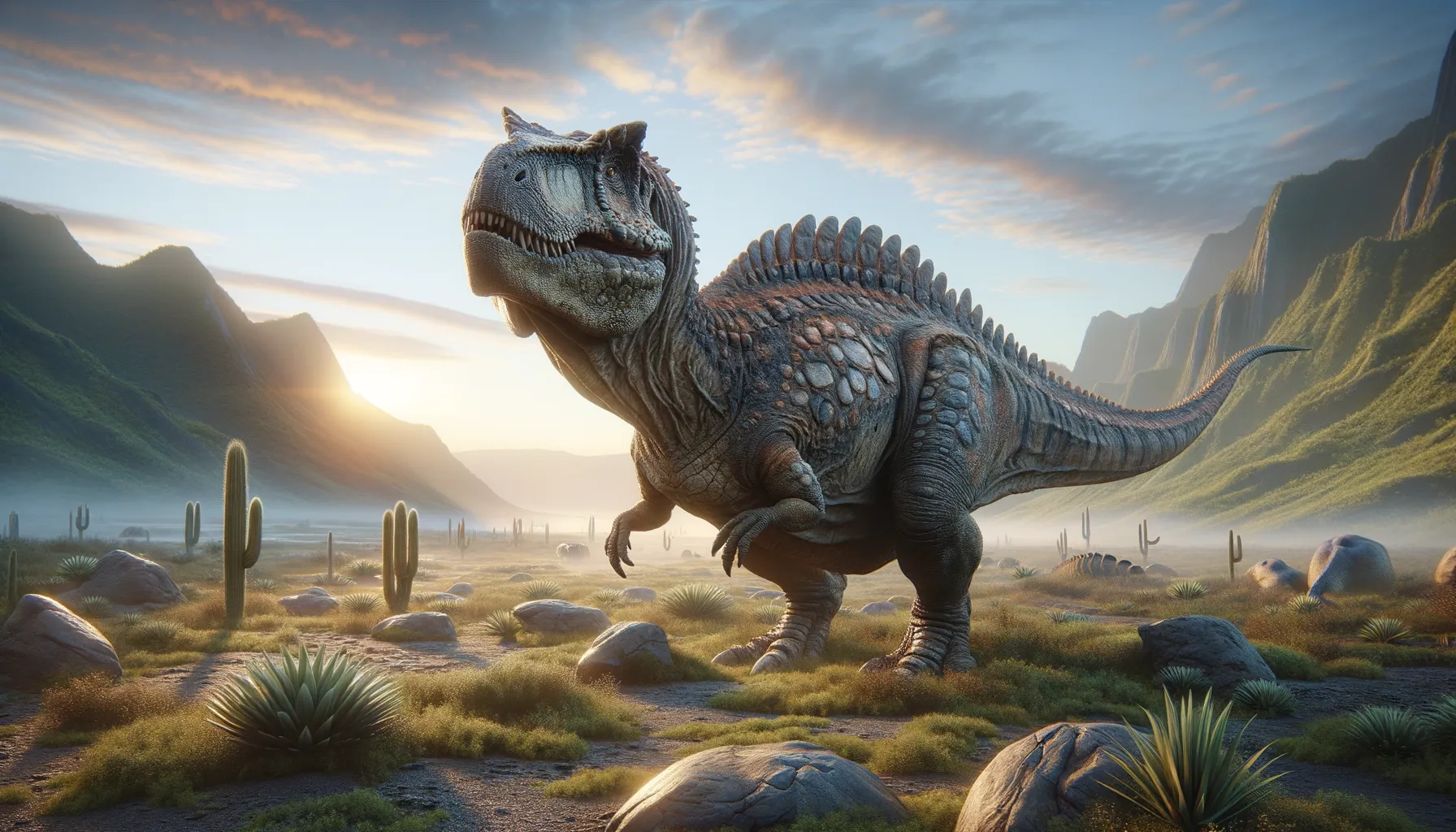
Monkonosaurus
Armored guardian of ancient lands.
Period
Jurassic
Length
Approximately 5 meters long.
Height
Stood about 2 meters tall.
Weight
Weighed around 2 tons.
Monkonosaurus was a heavily armored dinosaur that roamed the landscapes during the Jurassic period. Found in what is now Tibet, its large, bony plates and defensive capabilities suggest it was well adapted to survive in a range of environments. Known for its distinctive armor, this herbivorous dinosaur provides crucial insights into the evolutionary paths of ankylosaurian species.
Diet
Monkonosaurus was a herbivore, primarily feeding on low-lying plants and shrubs. Its diet consisted mainly of vegetation that was easily accessible with minimal competition from faster species.
Hunting
As a herbivore, it did not hunt prey but had to forage across its habitat. The search for ample food sources would have been critical for its survival.
Environmental challenges
During the Jurassic period, Monkonosaurus faced challenges from predators, requiring effective defense mechanisms. Climate fluctuations also posed risks, affecting vegetation growth. These environmental pressures shaped its adaptation strategies, reinforcing its defense features.
Speed
Likely slow due to its armored body.
Lifespan
Estimate of 30 to 50 years.
First discovery
Discovered in Tibet in the 1970s.
Fun Facts
- Monkonosaurus was a herbivorous dinosaur, meaning it fed primarily on plants.
- This dinosaur lived during the Late Jurassic period, around 160 million years ago.
- Monkonosaurus is known for its impressive armor; it had bony plates running down its back for protection.
- Fossils of Monkonosaurus have been predominantly found in Asia, particularly in regions that are now part of China.
- Despite its heavy armor, Monkonosaurus was capable of moving on all fours, making it quite mobile for its size.
Growth and Development
Monkonosaurus likely experienced steady growth over a period of decades, reaching full size during its adult years. Its development included the enhancement of its distinctive armor, crucial for deterring predators.
Habitat
This dinosaur inhabited areas with rich foliage, offering ample food supply. Its habitat likely included forested regions and open plains where low-lying vegetation could thrive.
Interaction with other species
Monkonosaurus had limited interaction with carnivorous species, relying on its armor for defense. It may have coexisted with other herbivores, sharing feeding grounds and resources peacefully.
Natural lifespan
It had a natural lifespan of several decades.
Reproduction
Monkonosaurus reproduced by laying eggs, with nest sites possibly located in safe areas away from predators. Parental care might have been minimal, with hatchlings relying on rapid growth to survive.
Social behaviour
This dinosaur possibly lived a solitary or semi-solitary life. Social interactions may have been rare, occurring mainly during mating seasons or when foraging in overlapping territories.
Fossil locations
Fossils have been primarily discovered in the Tibetan region, providing unique insights into its geographic distribution. These locations contribute to understanding its environmental adaptations and evolutionary history.
